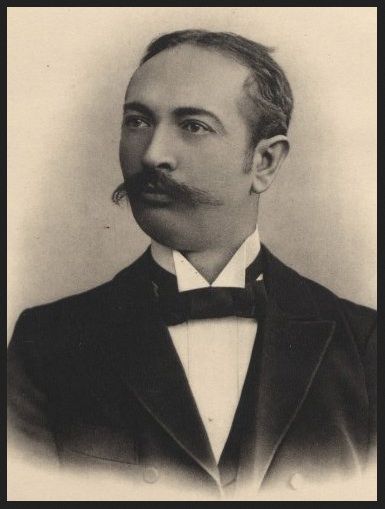Collector, Physicist, Entrepreneur: Tomasz Niewodniczański

The income from his professional activities allowed Niewodniczański to build up a cartographic collection which, today, is considered one of the largest and most valuable private collections in Europe. Tomasz Niewodniczański used all his money and all his available time to buy the exhibits, although the actual monetary value of the collection is difficult to estimate. Experts price it at many millions of euros, with a value of 100 million euros even being mentioned. Tomasz Niewodniczański discovered his passion for cartography in 1967, when his wife gave him a view of Damascus from the print works of Braun and Hogenberg dating back to 1576.[1] Niewodniczański had a been a keen collector since discovering a liking for postage stamps as a child. Dozens of the objects that he collected over the course of forty years are maps and atlases with illustrations of Polish regions since 1815. With the exception of the work of Gerard de Jode with the portrait of Stefan Batorys, the collection has all known cartographic representations of Poland.[2] This goal of completeness inspired the collector’s work from the very beginning. The objects were acquired in renowned auction houses and from private individuals, especially in Western Europe. However, the portfolio of Polish memorabilia and maps, in particular, contained works that could no longer be found in Poland. These rare iconographic pieces include the Warsaw Vedutes by Bernardo Belotto Canaletto, P. R. de Tirregaille's Warsaw city map from 1762, a cityscape of Kraków from the pen of Matthäus Merian and the map of the city of Danzig from 1812 created under Napoleon.[3] But Niewodniczański also owned 1,000 sheets of German maps and 200 maps of the Duchy of Luxembourg to which Bitburg, the city in which he lived, belonged. His primary focus, however, was on Polish memorabilia or Polonica. He wrote in the foreword to the catalogue published for the exhibition entitled “Imago Poloniae. The Polish-Lithuanian Empire in maps, documents and old prints in Tomasz Niewodniczański’s collection”: “Only many years later, after emigrating from Poland at the beginning of the seventies, did I develop a more serious “professional” relationship with my collecting, which was certainly linked to leaving my homeland and my longing for it and to my early interest in history.”
When Niewodniczański acquired objects, they could be entire portfolios, as in the case of the collection of old maps of Poland by Halina Malinowska in Geneva or in the case of the lot of 360 parchment manuscripts from Łańcut, which Alfred Count Potocki realised towards the end of the Second World War.[4] With this in mind, he acquired around 400 documents and letters from the Radziwiłł family in London. After the death of Aleksander Janta-Połczyński in 1976, in New York he bought Mickiewicz’s letters to Odyniec, as well as old maps.[5] This was the trigger for Niewodniczański to start collecting famous old autographs and in this field as well the testimonies of all Polish kings since Casimir the Great.[6] In New York in 1996, he bought around 140 manuscripts and typescripts by Julian Tuwim from the 1920s and 30s which were then published in 2000.[7] This part of the collection was also home to around 200 letters from Jarosław Iwaszkiewicz to Artur Błeszyński.[8] In Portugal, Niewodniczański acquired more than 200 letters from Kazimierz Wierzyński.[9] The real gems of the manuscripts include the letter from Empress Katharina II to Stanisław Poniatowski, in which she promises the Truchsess of Lithuania the Polish throne, interesting documents penned by Tadeusz Kościuszko, numerous letters from Napoleon Bonaparte and the letter from Captain Charles de Gaulle describing his participation in the Battle of Warsaw on 15 August 1920. The collection also contains books with dedications from authors and famous personalities and more than 1,500 letters from prisoners in German concentration camps.
A valuable exhibit from Tomasz Niewodniczański’s collection is the “Moszyńskiego Album”, a notebook containing 99 pages on which Adam Mickiewicz wrote 42 poems during his stay in Crimea and in Odessa. When the Niewodniczańskis visited Poland in 1993, the album was stolen, although the actual object of the thieves’ desire had been their car and not the extremely valuable notebook in its boot. Negotiations with the thieves went on for three years before the album was able to be bought back.
[1] The theologian Georg Braun (1541–1622) and the copper engraver Frans Hogenberg (1535–1590) published the comprehensive body of work “Civitates Orbis Terrarum”.
[2] Gerard de Jode (1509–1591), Dutch cartographer, engraver and publisher; Stefan Batory (1533–1586), Grand Duke of Lithuania and Polish King from 1576 to 1586.
[3] Bernardo Belotto, also known as Canaletto (1722–1780), Venetian painter, worked from 1767 until his death in Warsaw; Pierre Ricaud de Tirregaille (around 1725 to 1772), French architect and engineer, worked from 1752 to 1772 in Poland; Matthäus Merian the Elder (1593–1650), Swiss-German copper engraver and publisher.
[4] Alfred Count Potocki (1822–1889), Polish aristocrat, Prime Minister of Cisleithania in Austria-Hungary.
[5] Aleksander Stanisław Janta-Połczyński (1908–1974), Polish poet, publicist, translator, collector and bibliophile; Adam Mickiewicz (1798–1855), one of the most important poets in Polish romanticism; Antoni Edward Odyniec (1804–1885), Polish lyricist, dramatist and translator.
[6] Casimir the Great (1310–1370), Polish king from 1333 to 1370.
[7] Julian Tuwim (1894–1953), Polish lyricist.
[8] Jarosław Iwaszkiewicz (1894–1980), Polish author, publicist, critic and translator.
[9] Kazimierz Wierzyński (1894–1969), Polish author.


